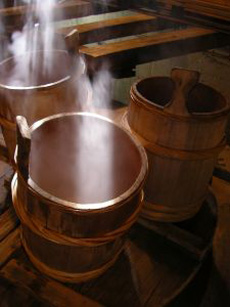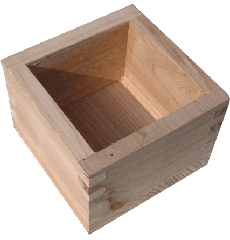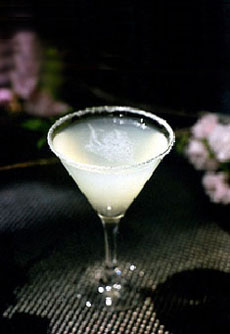Click on a letter to get to the appropriate glossary page: a b c d e f g h i j k l m n o p q r s t u v w x y z This glossary is protected by copyright and cannot be reproduced
Namazake: Unpasteurized or raw saké, which needs to be stored cold. Namazake, or “nama,” has a fresh, lively clarity of flavor, described as tangy and refreshing; it is quite different from pasteurized saké. There is a “green quality” and often, an herbaceous aroma from the living enzymes; some actually have a natural green tint. Namazake is also drunk young and edgy. Namazakes are hypersensitive to temperature variation; they must be refrigerated and handled with care. That is why few are exported. All types of saké (junmaishu, honjozo, ginjo-shu and daiginjo-shu) can be made as namazake. Namazakes have more acidity, which makes them good to pair with food that has strong savory qualities and citrus notes.
Rice Wine: Saké is often referred to as “rice wine,” but this is inaccurate: By definition, wine must be fermented from fruit. Rice is fermented from grain, like beer, although the production process is different, and saké produces no carbonation. From a body and flavor perspective, it is closer to wine than beer, although like beer, it is meant to be drunk fresh, and does not age like wine. Saké is not a distilled beverage, and thus is not in any way related to gin, vodka or other spirits.
Continue To Page 4: Terms S Through Z
|

The Nibble Blog
The Latest Products, Recipes & Trends In Specialty Foods
The gourmet guide you’ve been waiting for. New food adventures are served up daily. Check it out!

Food Glossary
Our Food Directories Are "Crash Courses" In Tasty Topics
Your ultimate food lover’s dictionary packed full of information and historical references. Take a look!

Food History
Let the journey begin!
Learn about the history Of 1,000+ Favorite Foods & Beverages Let’s explore the history of your favorie goods together.Let the journey begin!



